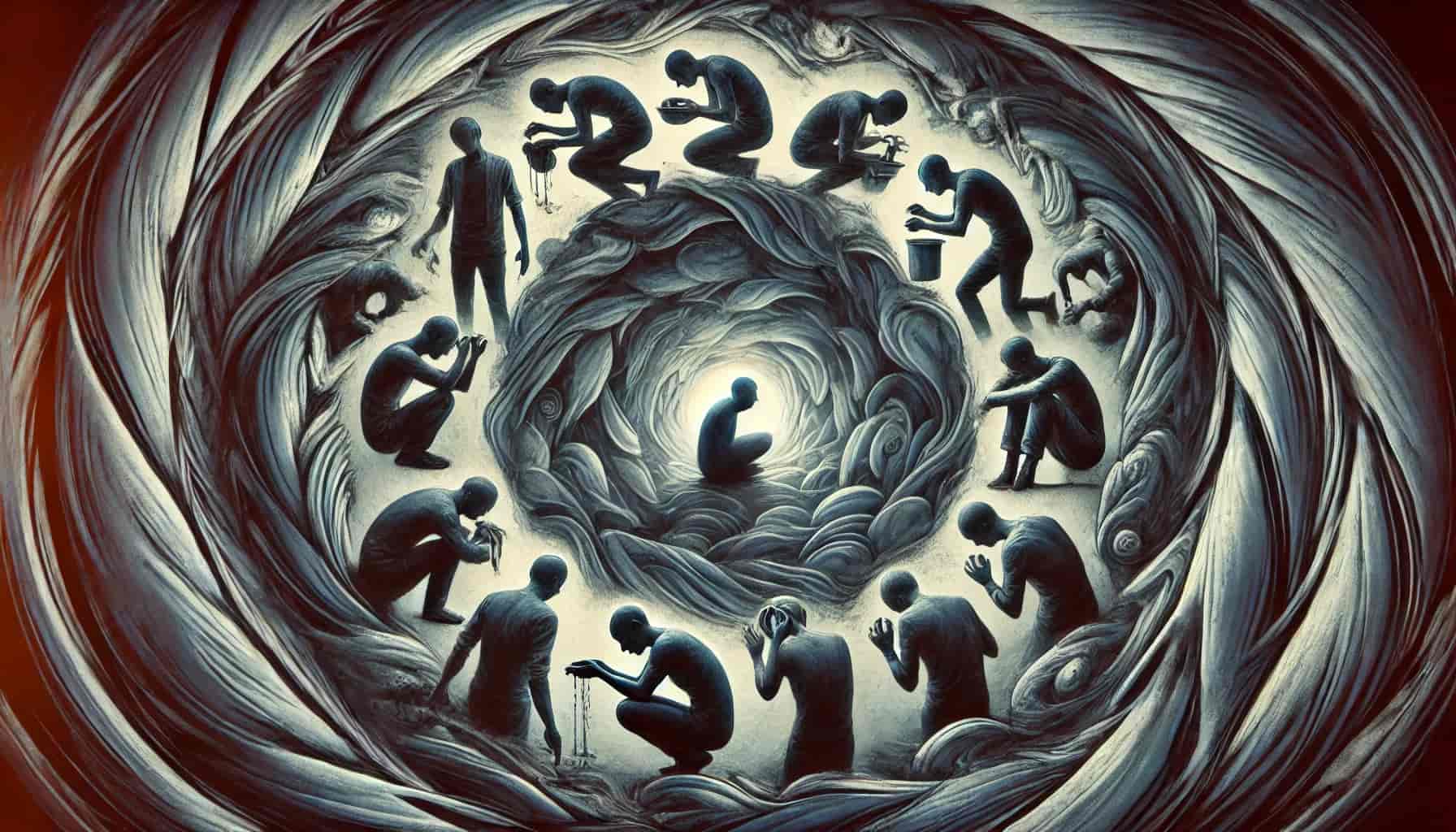Key Facts
- Prevalence: Compulsive behaviors affect a significant portion of the Indian population, with estimates suggesting that up to 23% of people may experience ObsessiveCompulsive Disorder (OCD) in their lifetime.
- Age of Onset: Compulsive behaviors often begin in childhood or adolescence, with early signs sometimes visible as young as 812 years old.
- Impact: These behaviors can severely impact daily functioning, relationships, academic performance, and overall quality of life.
- Stigma: Mental health stigma remains a significant barrier in India, leading to delayed diagnosis and treatment of compulsive behaviors.
Overview
Compulsive behaviors are repetitive actions or rituals performed to reduce distress or anxiety, often linked with intrusive and distressing thoughts (obsessions). While OCD is the most commonly recognized form, other compulsive behaviors include hoarding, skin picking (dermatillomania), hair pulling (trichotillomania), and compulsive gambling or shopping.
In India, these behaviors are often misunderstood and misattributed to superstition or moral failings, which can complicate early intervention and support. The rise in awareness, though slow, is gradually leading to better recognition and management of these conditions.
3. Symptoms and Patterns
Compulsive behaviors can manifest in various forms, but common symptoms include:
- Repetitive Rituals: Washing hands excessively, checking locks, counting, or arranging items in a specific order.
- Avoidance: Avoiding situations that might trigger obsessive thoughts or compulsive actions.
- Inability to Control Actions: Even when aware of the irrationality of the behavior, individuals feel compelled to perform the action repeatedly.
- Emotional Distress: High levels of anxiety, guilt, or shame, especially when unable to perform the compulsive act.
Patterns often involve cycles where obsessive thoughts lead to compulsive actions, temporarily relieving anxiety but reinforcing the behavior over time.
4. Risks and Protective Factors
Risks:
- Genetics: Family history of OCD or related disorders increases the risk.
- Trauma: Childhood trauma or stressful life events can trigger or exacerbate compulsive behaviors.
- Neurological Factors: Imbalances in brain chemicals like serotonin are linked to compulsive behaviors.
Protective Factors:
- Early Intervention: Early recognition and treatment can significantly reduce the impact of compulsive behaviors.
- Supportive Environment: A supportive family and social network can reduce stigma and encourage treatment.
- Education and Awareness: Increased awareness and understanding can lead to more compassionate responses and earlier helpseeking.
5. Treatment and Care
Treatment for compulsive behaviors in India often involves a combination of medication, therapy, and community support. Given the stigma and lack of access to mental health services, particularly in rural areas, care must be culturally sensitive and accessible.
Primary care physicians and mental health professionals should work together to develop comprehensive care plans, including psychoeducation, coping strategies, and ongoing monitoring. Encouraging the use of technology, such as teletherapy, can also help bridge gaps in mental health service delivery.
6. Medicines
Medications can be an essential component of treatment for compulsive behaviors. The most commonly prescribed medications include:
- Selective Serotonin Reuptake Inhibitors (SSRIs): Medications like fluoxetine, sertraline, and fluvoxamine are often used to reduce the intensity of obsessive thoughts and compulsive behaviors.
- Tricyclic Antidepressants (TCAs): Clomipramine is another option, particularly for those who don’t respond well to SSRIs.
- AntiAnxiety Medications: Benzodiazepines may be used for shortterm relief of anxiety symptoms, though they are generally not recommended for longterm use due to the risk of dependency.
Note : Medication management should be closely monitored, particularly in younger populations, to assess effectiveness and side effects.
7. Psychological and Psychosocial Interventions
Effective psychological interventions are critical in managing compulsive behaviors. Common approaches include:
- Cognitive Behavioral Therapy (CBT): CBT, particularly Exposure and Response Prevention (ERP), is considered the gold standard for treating OCD and related disorders. ERP involves gradually exposing individuals to their fears and preventing the compulsive response.
- MindfulnessBased Cognitive Therapy (MBCT): This approach helps individuals become more aware of their thoughts and feelings without reacting compulsively.
- Family Therapy: Engaging family members in the therapeutic process can reduce conflict and improve understanding and support within the household.
- Support Groups: Peer support groups provide a space for sharing experiences, reducing isolation, and learning coping strategies from others facing similar challenges.
In the Indian context, integrating traditional practices like yoga and meditation can also complement conventional treatment approaches, promoting holistic wellbeing.
Conclusion
Addressing compulsive behaviors in India requires a multifaceted approach, combining medication, psychological interventions, and community support. With increased awareness and reduced stigma, individuals can seek help earlier, leading to better outcomes and improved quality of life. As mental health becomes a more prominent issue in the country, ensuring access to culturally relevant care is essential in managing and overcoming compulsive behaviors.


